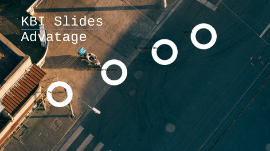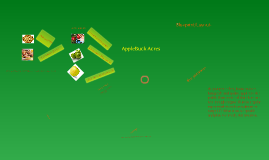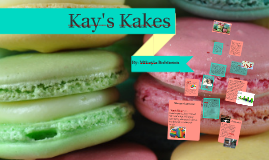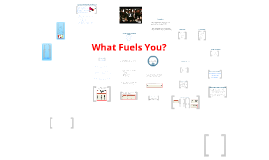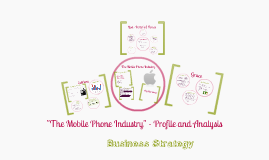Business Strategy
Transcript: A Strategic Look into the Energy Drink Industry A Presentation by: Caroline Love Kara Parkey John Flaniken Will Tumlin George Allers In the mid-2000s, these premium-priced products were introduced. Major beverage companies such as Coca-Cola and PepsiCo used these alternative drinks to expand their markets. Globally, sales volumes are expected to increase for the beverage industry as a whole. The U.S. currently has 42.3% of the Alternative Beverages Market, which is the highest globally. Alternative beverages can be found in a variety of locations: Supermarkets Supercenters Natural Food Centers Wholesale Clubs Convenience Stores 75% of energy drink sales come from convenience store sale, since they are designed for immediate consumption. Convenience store slot space is competitive for alternative beverages, where most stores only allow 2 other brands beside those distributed by Coca-Cola and Pepsi. Strategic Issues/Problems Confronting the Alternative Drink Industry 1)Competition with carbonated drinks (Pepsi and Coke) 2)Competition among rival sellers within the industry- In 2009, 231 new vitamin enhanced beverages were introduced in the U.S.; there are over 500 energy drink products worldwide 3)Distribution difficulties 4)Health issues, mainly with the energy drink industry When Living Essentials released its 5-Hour Energy product in 2004, it became the game-changer in the energy drink industry. This was the first time that an energy was being targeted and marketed towards adults and parents in office and workforce, as opposed to being aimed at teenagers. In 2009, 5-Hour Energy held 85% of the market share for the energy shot business, with attractive markets in Europe, Australia, South America, and the Middle East. Leaders in Alternative Beverages In 2009 was the largest producer of alternative beverages, with a global market share of 26.5% Had more than a 2-to-1 worldwide market share over Coca-Cola Held a 47.8% market share in the industry in the United States Best-selling drink in alternative beverages is Gatorade (held a 75% market share in sports drinks in United States) Propel SoBe Lifewater Amp Energy 12 flavors and 2 flavors of No Fear DoubleShot Espresso complemented Starbucks Frappucino Leader manufacturer, marketer, and distributor of nonalcoholic beverages in world 2009 revenues of nearly $31 billion Has struggled to build market share in alternative beverages Asia was only market where Coca-Cola exceeded PepsiCo sales 3rd largest seller of alternative beverages in United States Powerade Full Throttle NOS Rehab TaB Vault In 2009, they introduced glaceau vitaminwater in South Africa, France, South Korea, Japan, Belgium, Portugal, Hong Kong, China, and Sweden Agreed upon deal with Hansen Natural Corporation to distribute their Monster energy drinks in United States, Canada, and six European countries Red Bull GmbH Distinctive taste and formula was launched energy drink market in Western world in 1990s Modeled after Krating Daeng, which was sold in Thailand to help businessmen adjust to jet lag and long business hours Launched in Austria in 1987; expanded into Hungary and Slovenia in 1992; Germany and UK in 1994; and U.S. in 1997 Hansen Natural Corporation Hansen has been a strong company that has produced many alternative beverages such as natural sodas, blended fruit juices, energy drinks, sports drinks, fruit juice smoothies, and vitamin-enhanced drinks. It was founded in 1935 by Hubert Hansen, but then acquired by South Africans Rodney Sacks and Hilton Schlosberg in 1992 for $14.5 million. Sales skyrocketed from the production of Monster Energy Drinks. In 2009, Monster was the 2nd best-selling energy drink in the United States. Sales of Monster Drinks accounted for approximately 90% of Hansen's revenues in 2009. Concerns About Caffeine Consumption Since the FDA does not regulate the amount of caffeine that is allowed to be placed in each product, there have been many serious side effects and dangerous health risks that have been associated with energy drinks. Heart arrhythmias and insomnia are just two of the main side effects that have been affiliated with the energy drink industry. New Developments in Energy Drinks Mixing with Drugs and Cough Syrup Mixing with Alcohol Relaxation Drinks Strengths of the Industry 1) Brand loyalty based on taste, energy-boosting capabilities, and image for energy products 2) Vitamin-enhanced beverages- brand name and packaging, advertising, flavors, and nutrition 3) High profits- deals with strategy 4) Wide diversity in product line and flavors (could be weakness) 5) Product innovation Recommendations 1) Simplify the product lines: article says PepsiCo had 12 Amp flavors and 28 SoBe vitamin-enhanced beverages, as well as increased Gatorade flavors 2) Concentrate on getting the simplified product to the convenience store because these drinks are usually purchased for immediate consumption (2010- 75% of energy drink sales) 3) Efficient distributions to






